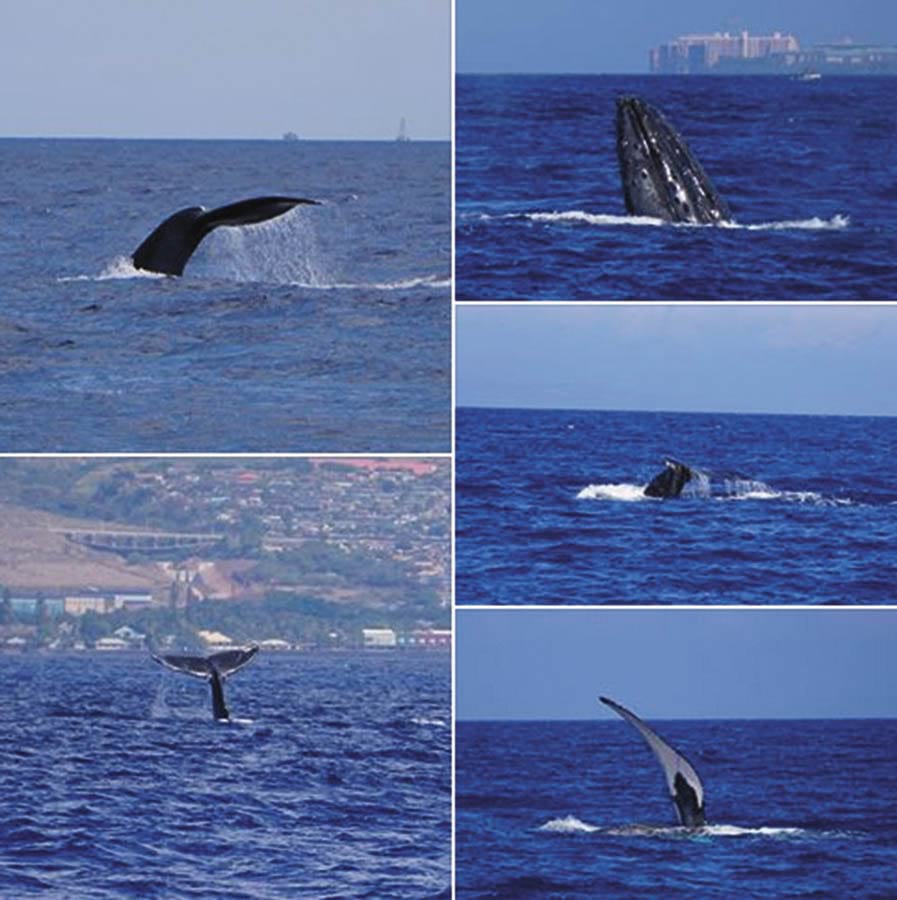
’Tis the season to bring out your binoculars and have a whale-of-a-time too!
Liza of “A Maui Blog”
All Photos courtesy Liza Pierce
It’s Whale Season on Maui and I thought it would be fun to talk about whales here at our little corner of Kwento-Kwentuhan.
Whale season on Maui is from December through April (or even May); the peak is around February and March. Humpback whales migrate to Maui to pass on their knowledge to the young and engage in nursing activities, calving and mating. Mothers nurse calves for almost a year. Calves do not stop growing until they are ten years old.
Humpback Whales have many interesting characteristics. Did you know that the female whales are larger than males? Did you know that an average whale heart weighs approximately 430 pounds or as much as three average human beings? Did you know that whales have hair? Did you know that whale songs travel great distances and can be heard across the world’s oceans? And can continue for hours on end? Did you know whale songs are sung exclusively by males? Did you know that the spray from the blowhole can reach up to 15 feet high? Did you know that whales can grow up to 60 years old?
Whales are mysterious and it is not known why they breach or what their songs and sounds communicate. The name of the Humpback describes the motion it makes when it prepares to dive and arches its back.
It’s fun to watch the Humpback Whales on Maui. Here are a few typical humpback whale behaviors seen in Hawai‘i. Next time you see whales on Maui, check out and see if they do any of the following moves:

Blow
Adults surface every seven to 15 minutes while calves must rise every three to five minutes to breathe. Adults can remain underwater for up to 45 minutes but usually last only up to 15 minutes. They can dive to a depth of 500–700 feet.
Breaching-Thrusting
A full breach occurs when whales thrust themselves out of water from the head all the way to the tail in an acrobatic display then make a large splash on the surface.
Tail Slap-Lobtailing
The whale lifts its tail out of the water into the air, swings it around then slaps it on the water’s surface.
Tail Throw-Peduncle Slap
The peduncle is the part that connects to the tail. The whale throws its tail out of the water and slaps the peduncle on the surface of the water.
Pectoral Fin Slapping-Flippering
The Humpback slaps the water’s surface with one or both fins simultaneously.
Head Rise or Spy Hop
The whale pokes its head out of the water for up to 30 seconds to take a look around.
Fluke Up Dive-A type of dive
The markings on the underside of the flukes (tails) are unique to each individual whale, like a fingerprint. The tail of the whale appears out of the water in an upward arch and slowly rolls underwater in conjunction with a dive.
Head Lunge-Head Slapping
The whales head lunges forward, raised above the water.
As we always say, “We are lucky to live on Maui.” This place is a paradise on earth. Even the whales love coming here.
Liza Pierce of A Maui Blog is an Interactive Media Strategist in Hawai‘i. She started blogging in 2006 and she loves talking story online and spreading aloha around the world. She’s been living on Maui since 1994 and considers Maui her home. A wife, a mother, a friend…and so much more. She loves Jesus; Maui Sunsets Catcher; Crazy About Rainbow; End Alzheimer’s Advocate. Her life is full and exciting here on the island of Maui.
Liza is currently the Interactive Media Strategist with Wailea Realty Corp.

